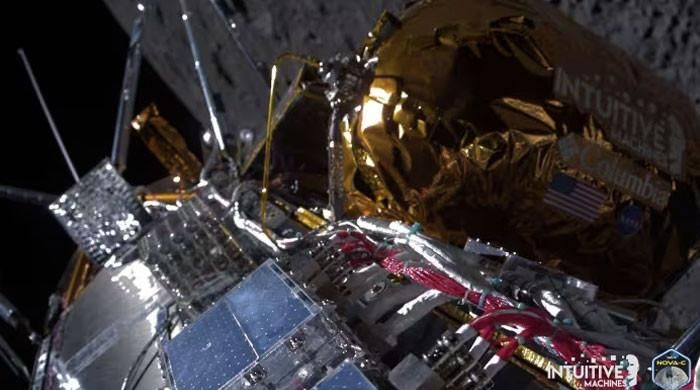Intuitive Machines' robotic lander, called Odysseus, successfully landed near the Moon's south pole at 6:23 p.m. EST on Thursday.
HOUSTON – In a historic moment, a privately built spacecraft achieved the first U.S. moon landing in more than half a century.
Intuitive Machines' robotic lander, called Odysseus, successfully touched down near the moon's south pole at 6:23 p.m. EST on Thursday.
The unmanned six-legged robot faced a difficult final approach due to a failure in its autonomous navigation system. Engineers on the ground had to employ an untested workaround at the last minute, making the landing a suspenseful achievement.
After a planned radio blackout, communication was reestablished with a weak signal confirming the successful landing. NASA Administrator Bill Nelson praised the achievement, stating, “Odysseus has taken the moon.”
Odysseus is the first commercially manufactured and operated vehicle to achieve a “soft landing” on the Moon, marking a major milestone in NASA's Artemis lunar program. The spacecraft carries scientific instruments and technology demonstrations for NASA and commercial customers.
As part of NASA's long-term lunar exploration under the Artemis program, Odysseus aims to collect data on the interactions of space weather, radio astronomy, and lunar environmental aspects.
The achievement propels the United States to advance in the race to return astronauts to the moon, with a crewed Artemis mission planned for late 2026.
The success of Intuitive Machines' Odysseus is a testament to the growing role of private companies in space exploration, taking advantage of advances in technology to achieve feats previously only performed by government agencies.
The moon landing sets the stage for future missions and paves the way for sustained human exploration, aligning with NASA's ambitious goals for the next frontier: Mars.












